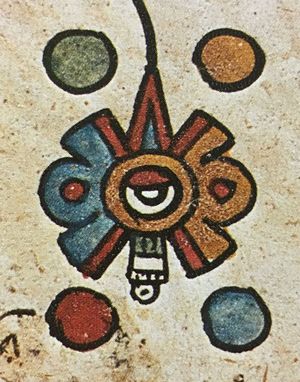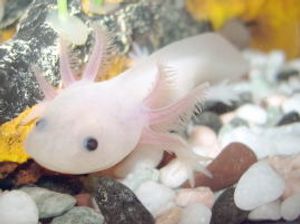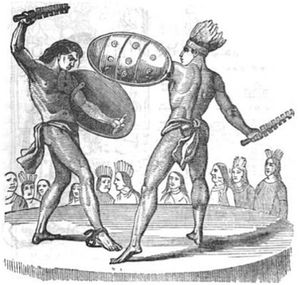Author: Aleczandra Houston (she/they/theirs), intern, Truhlsen-Marmor Museum of the Eye®
Our current featured exhibit at the museum, “Decoding the Eye: Signs & Symbols,” discusses the symbolism of the human eye in a variety of cultures. The exhibit touches on countries such as Egypt, Greece and Israel, but eye myths can also be found much closer to home if you know where to look. There are owl eyes in American indigenous mythology and a variety of eye lore dating back to the creation of many Mesoamerican civilizations, including the Aztecs and the Maya.
During my time as an undergraduate, I had the opportunity to do an archaeology dig in the city of Tenochtitlan in Mexico. There, I worked on Mayan hieroglyph translations. I learned that Mesoamerican art is made up of bold colors and strokes. The stories and fables passed down orally through generations are bolder still. So, now at the museum, I am very interested in searching Mesoamerican art and mythology for examples of eye signs and symbols.
The Aztec Empire (c900 CE–1520 CE) spanned southward from modern Mexico into Central America. In Aztec creation mythology, the path of the sun is controlled by two very powerful gods, Quetzalcoatl (pronounced keht-zol-KWA-tahl) and Xolotl (zo-LAH-tahl). The god Quetzalcoatl is commonly depicted as a serpent with brightly colored feathers. He pushes the sun into the sky each morning and controls wind-related weather, including whirlpools and cyclones. He is also the deity of the Aztec priesthood. He appears for the first time in recorded history in the first century BCE.

The feathered serpent Quetzalcoatl from the Codex Borbonicus (c1519-1521 CE)
His brother, Xolotl, who has the features of both dog and man, is the lesser known of the two gods. Xolotl takes over for his brother, guiding the sun through the afterlife at night. He also assists the dead on their journey and is the harbinger of thunder and lightning. One of the most important characteristics of Xolotl is that he has lost his eyes, as seen in the drawing below. According to legend, each god was required to sacrifice a part of themselves for the sun to be created and life to begin anew. Xolotl pulled out of this sacrifice at the last second and was so distraught that he wept until his eyes fell out of his head.
![mesoamerican2.jpeg ] A side view of a human-like figure with the head of the dog, cloaked in red, kneeling in front of a wall of eyes. It is missing its eyes and reaches out for those on the wall.](/detail/image.axd?id=12d3a985-438d-4094-a1dc-6ba3ace9cd52&t=638297725622270000)
Dog-faced Xolotl in the Codex Fejéváry-Mayer (date unknown, pre-1521) reaching for disembodied eyes
Aztec writing consists of glyphs, multiple pictures and symbols arranged together to form words or phrases. The eye symbol can be found in one important glyph referred to as Nahui Ollin. The characters separately can be roughly translated to “four” and “movement,” but as a whole, the two characters refer to the cosmos or solar system as the beginning of new life. It is said that the central eye in the glyph (ixtli) symbolizes Xolotl’s lost eyes.

Nahui Ollin glyph from the Codex Borbonicus (c1519–1521 CE), with Xolotl’s eye in the center
In a more extensive version of the myth, the sun was created with no wind and thus could not rotate to night. The god of wind, Ehecatl (eh-he-CAH-tahl) began to kill the gods to make the new sun rotate or set at night. Xolotl, once again terrified, broke himself apart and transformed into a cornstalk (xolotl), a maguey plant (mexolotl), and an amphibious animal (axolotl) in order to hide. He was eventually found and forced to give his life for the sun to begin its rotation.

A modern-day axolotl, commonly purchased as a pet
Eye symbols can also be found in Mayan culture. During the Mayan Classic Period (c250 CE–900 CE), on the modern-day Yucatan Peninsula, the eye was not only the hieroglyph used for the act of sight, but also used symbolically in many murals, clothing and historical manuscripts. Often, the symbolic eye will be shown with the optic nerve attached, in which case the eye usually carries a more mystical meaning. It is theorized that eyes still attached to the human skull in Mayan art may perceive more of the heavens.
When the disembodied eye is depicted with bones, the artist is referring to a wahyis (wa-HIGH-is). Wahyis are a mixture of human and skeletal creatures that eat human remains, similar to our modern notion of a zombie. According to the mythology, wahyis eyes are still functional but do not operate the same as those of the living. Mayan warriors would often paint detached eyes on their shields or clothing as a warning to enemies during battle. When Mayan deities or mortals are depicted with eyes and more macabre images in their clothing, the symbol is usually seen as a representation of dealing with the underworld.

Mayan gladiatorial-style sacrifice where the soldier’s shield is painted with eyes
The Mayans also had their own notion of the evil eye, which they called k’ak’as ich (kah-KAH-az ICK). Any child or baby who was looked upon with k’ak’as ich, a specific amount of vitriol, could become sick or be kidnapped to the underworld. This could also occur if the baby came into contact with someone who was overheated, someone who gave them attention without picking them up, or if they came into contact with someone returning from a graveyard. Tying a red string around the right-hand wrist of the child was said to ward off the bad energy.
These are just a few examples of eye symbols and mythology in Mesoamerican cultures. Sight is one of our most used senses, so it’s no wonder civilizations have used the eye to tell stories of the earth’s new beginnings, to caution enemies in battle, and to warn of evil forces targeting their children.
More mythology surrounding the human eye in different cultures is currently available in the Museum of the Eye’s ”Decoding the Eye: Signs & Symbols” exhibition which ends Spring 2024.